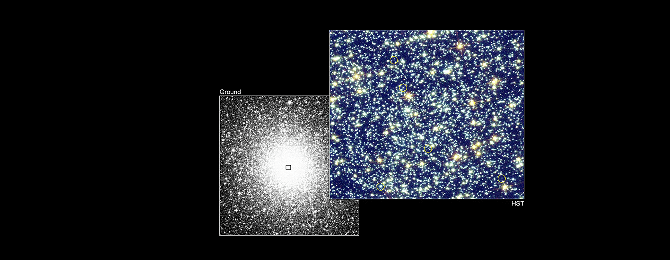Astronomers have explained the revival of the blue wanderer.
Located 53 light-years away from us in the constellation Carina, HD 65907 is a triple star system where seemingly ordinary, average specimens are observed: a yellow-white dwarf with a mass roughly that of the Sun and two even less massive companions. However, there are questions surrounding this yellow-white dwarf.
First and foremost, determining the age of the star has proven challenging. Based on its brightness and temperature, it appears to be approximately five billion years old. With a solar-like mass, this age is far from advanced: our Sun is about the same age and is in the full bloom of its nuclear fusion. According to calculations, it is expected to last another five billion years.
Meanwhile, another characteristic of the largest star in the HD 65907 system is completely perplexing — its chemical composition, which astronomers can identify through careful analysis of the star's light spectrum: each chemical element leaves a distinct "mark." It turns out that this star has suspiciously low amounts of so-called metals, which astronomers define as everything except hydrogen and helium.
The quantity of these "heavy elements" is a key indicator of the star's age: initially, the Universe contained only hydrogen, helium, and a small amount of lithium. All other elements on the periodic table were formed later as a result of nuclear reactions in stars, supernova explosions, and stellar collisions. Therefore, the very first generation of stars in the Universe was predominantly hydrogen and helium, while each subsequent generation emerged from increasingly chemically rich and diverse materials.
From a chemical standpoint, HD 65907 appears to belong to one of the earliest generations: its "chemical age" has been estimated at 11 billion years. This means that while it is not composed solely of hydrogen and helium, the quantities of other elements are merely trace amounts. For instance, lithium is found to be at least six times less abundant than in the Sun, and beryllium is 15 times less.
In a recent article for the journal Astronomy & Astrophysics (available on the Cornell University preprint server), researchers from Brazil and Australia proposed an intriguing solution to this puzzle: they calculated that the constellation Carina is home to another example of a rare and completely unusual type of star — the so-called blue stragglers.

These stars are indeed "bluer" and hotter than they should be based on their mass and age. It seems they somehow "live" too long, or rather, remain young for an extended period.
Astronomers have noted that such stars are most often found in globular star clusters — spheres densely populated with very old, in fact, already "dead" stars: white dwarfs and neutron stars. These are all the collapsed remnants of former stars.
There is a hypothesis that "blue stragglers" arise from collisions and mergers of white dwarfs: the material from two "dead" stars gets so "stirred up" and heated that nuclear reactions are reignited in the resulting single star. This phenomenon is likened to resurrection.
This, according to astrophysicists, is what happened with HD 65907: it originated from two dwarf stars that formed 11 billion years ago and merged into one five billion years ago.
However, this proposed "resurrected" star is not located in a densely populated cluster where collisions are common, but there is suspicion that it merged with its own companion. This suggests that it was not originally a triple system, but rather a quadruple one. Astrophysicists emphasized that stellar quartets do occasionally occur in the cosmos.